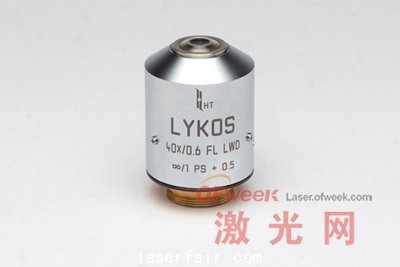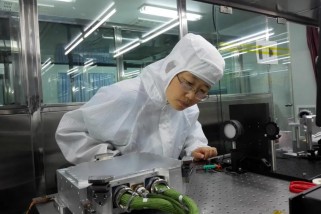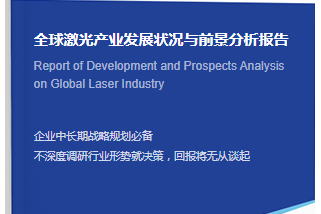细胞生物学研究,尤其是干细胞和生育治疗研究,是一种数字游戏。科学家需要创造、分析、修正甚至放弃一些含有百万个细胞的细胞组织,来避免研究过程中的瓶颈。 Hamilton Thorne公司发现,激光器在细胞研究中作用巨大;实验室用激光源在细胞研究项目中的应用范围急剧增大。再生医学和生育研究用激光器设备供应商认为研究人员已经找到了一种实际有效的方式来利用激光器设备。 Hamilton Thorne首席执行官Meg Spencer 指出,“在生育研究中已经使用了一些激光器;但是往往都降低了显微系统的荧光性。激光器同样也曾被用于干细胞研究领域;但是由于激光器的大小和成本,普及还受到限制。而我们通过一种完全不同的方式---减小激光器系统的尺寸并将其直接放置在20倍或者40倍显微镜物镜内。据我们所知,还没有其他公司这么做过。” 切除与创新 Hamilton Thorne激光器发出的波长为1460纳米;随着应用的不同,波长会有细微的变化。这种红外波长会被细胞表面的水吸收,进而通过激光器有选择性的切除掉无用的细胞,或者将一些细胞放置在特定区域;这是实验室研究取得的一项重大进步。 其他用途则更微妙。可以通过选择性的精确控制透明带(zona pellucida)的移除,来提高IVF程序的成功率。透明带是围绕在不成熟卵细胞周围的膜;可以通过激光器来有效地形成这些膜。研究人员希望在将干细胞注入八细胞胚胎的过程中,使用激光器以将损伤控制到最小。 胚胎注射 Spencer指出,“事实上,这些激光器在细胞上进行微型机器人显微手术。这种基本的操作开辟了多种应用,包括克隆、核移植、切除、生殖切除以及预移植等,都可以通过同样的基础激光器系统进行。” 激光器的多用途使得激光器在高科技生物医学中有巨大的潜在市场;Hamilton Thorne相信在未来五年内激光器市场将成为一个几十亿美元的产业--其中干细胞市场将会是主要的增长点。 小就是最大优点 Spencer说道,“干细胞研究早期使用的激光器系统往往比较大、而且价格昂贵,所以几组研究人员都要共用。目前这一领域的经济状况允许研究人员使用安装在各自实验室内的多个小型激光器系统;这样一来可以减少成本并避免了污染的风险。我们的激光器系统已经实现了这一目标。” LYKOS 系统 Hamilton Thorne的显微镜物镜和其一体化激光器源能直接嵌入大多数标准的倒立或正立显微镜的镜头转台上。 显微镜物镜 一些发射器的设计中也包括了小型化技术;首席技术官Diarmaid Douglas-Hamilton指出,“我们能自由的选择符合我们基本要求的二极管;然后对其运行方式做出一些改变,以便使其输出参数符合我们的需求。” “用户可以适当地控制输出功率和脉冲宽度,以便使得该激光器系统成为一级设备。一般的脉冲宽度都低于600微秒,脉冲最大峰值功率低于180&mic#p#分页标题#e#ro;J。光点直径范围为3至4微米。” 在生产中,激光器耦合被锁定在显微镜物镜的光轴上;一旦达到了最佳平移对准和角对准,而光束质量也符合要求,则意味着用户无需做任何进一度的调整。 公开市场状况 Hamilton Thorne 成立于2011年,并在2008年将其分子诊断部门出售给Thorne Diagnostics。之后的第二年,也就是2009年在多伦多创业板市场上市。 公司最近宣布2011年Q1总销售量140万美元,与上年同期相比增长了22%。尽管如此,2011年Q1数据显示,公司净亏损额为74.6万美元,比去年Q1亏损额度增长了 31%;而公司的亏损都与其产品开发有关。 Spencer解释道,“早期的亏损与我们的分子生物技术的开发有关;这项分子生物技术现在已经接近商品化,并且已经成立了单独的部门。目前的亏损,部分是因为销售和市场规模化、以及扩大基础设施建设来支撑持续增长的规划而引起的。” 此次的扩张计划主要靠2010年下半年公司发行的125万美元的债券支持;公司相关人士指出,发行此次债券是为了加速新产品的开发工作。 但是还需要更多的投资;Hamilton Thorne下一步需要回归到公开市场。Spencer指出,“公司拥有许多金融机构投资者和天使投资人,他们都非常支持公司的发展,从而使得公司的经济状况一直非常良好。此外,我们规划接下来几年在公开市场取得更大的突破。” 原文如下: Cell biology research, particularly studies of stem cells and fertility treatments, is a numbers game. Laboratories must create, analyze, modify or discard cell cultures containing perhaps millions of cells as efficiently as possible, to avoid bottlenecks in the workflow. Lasers could have a major role to play, and the use of laboratory-scale sources in cell research programs is set to expand dramatically, according to Hamilton Thorne. The Beverly, Massachusetts, supplier of laser instruments for regenerative medicine and fertility studies believes it has found the best way to put laser tools into the hands of researchers in a practical and economic manner. “Some lasers are already used in fertility studies, but usually in ways which reduce the fluorescence capabilities of the microscope systems involved,” says Meg Spencer, CEO of Hamilton Thorne. “Lasers have also been applied in the stem cell field, but the size and expense of the lasers involved have inhibited their penetration. We have taken an entirely different approach, by miniaturizing the laser system and mounting it directly inside a 20x or 40x microscope objective. No other company has done this, to our knowledge.” Ablation and creation The Hamilton Thorne sources emit at wavelengths around 1460 nm, with slight variations depending on the exact nature of the application. This infrared wavelength is strongly absorbed by the water present in the cell‘s structural features, allowing the laser to selectively ablate unwanted cells or rapidly score cell cultures to demarcate areas of interest, a key step in practical laboratory work. Other uses can be more subtle. The chances of a successful IVF procedure are known to be improved by the selective and precisely controlled removal of the zona pellucida, a membrane surrounding an immature egg cell, and a laser is an efficient means to create these localized holes. Similarly, researchers wishing to inject stem cells into early eight-cell embryos can use a laser to allow localized access with minimal damage. “In effect, the laser carries out miniature robotic microsurgery on cells,” is how Spencer describes it. “That basic operation opens up all sorts of applications in cloning, nuclear transfer, ablation, fertility ablation and pre-implantation, which can all be carried out with the same basic laser system.” This versatility is expected to equate to a substantial potential market for lasers in advanced cell biology, which Hamilton Thorne believes will become a billion-dollar opportunity within five years - with the stem cell sector likely to be a major growth engine. Small is beautiful “The laser systems previously used in stem cell studies have tended to be large, expensive, and shared between teams of researchers,” notes Spencer. “The economics of this field is now driving researchers towards the use of multiple smaller laser systems housed within their own facilities, both to reduce the expense and to avoid any risk of contamination. Our laser systems bring that goal within their reach.” The Hamilton Thorne microscope objectives and their incorporated laser sources can be screwed into the turret of most standard inverted or upright microscopes. An additional visible beam indicates the target location to the researcher, and they can bring the laser to bear almost as easily as they would change magnification. Miniaturization has involved some careful emitter design, according to CTO Diarmaid Douglas-Hamilton. “We are free to select almost any diode that suits our basic requirements, but then we make certain changes to the way the source operates to ensure the output parameters match our needs,” he says. “The power output and pulse length are easily controlled by the user within limits that keep the laser system qualified as a Class 1 device. Typical pulse duration is less than 600 µs, with a maximum energy per pulse of below 180 µJ. The spot size ranges from 3 to 4 µm.”#p#分页标题#e# The laser’s alignment is locked to the optical axis of the objective during manufacture, once the optimum translational and angular alignments are achieved and the beam quality is satisfactory – meaning that no further adjustment by the user is required. Looking to public markets Originally founded in 2001, Hamilton Thorne went public in 2009 after spinning off its molecular diagnostics unit to Thorne Diagnostics the previous year. It is quoted on Toronto’s TSX Venture exchange, a public venture capital marketplace for emerging companies. The firm recently announced that total sales increased by 22% year-on-year to $1.4 million for the first quarter of 2011. Nonetheless, that quarter also showed a net loss of $746,000, widening 31% over the same period of the previous year, and the company has historically incurred losses associated with the development of its products. “Earlier losses related to our development of a molecular biology technology which is now nearing commercialization and has been spun off into a separate entity,” explained Spencer. “The current losses are part of the corporate development plan to scale sales and marketing and expand infrastructure to support continued growth.” That expansion plan comes off the back of a $1.25 million debentures issue in the second half of 2010, which the company says was designed to accelerate the development of new products. But more investment is needed, and the next step for Hamilton Thorne is a return to public markets, Spencer says: “The company has major institutional and angel investors who remain extremely supportive, placing the company in a comfortable financial position. However, we do plan a significant raise on the public markets within the next year.”



转载请注明出处。







 相关文章
相关文章
 热门资讯
热门资讯
 精彩导读
精彩导读



















 关注我们
关注我们




